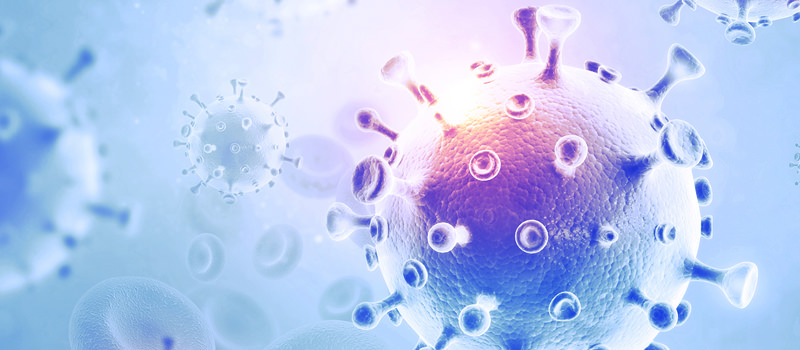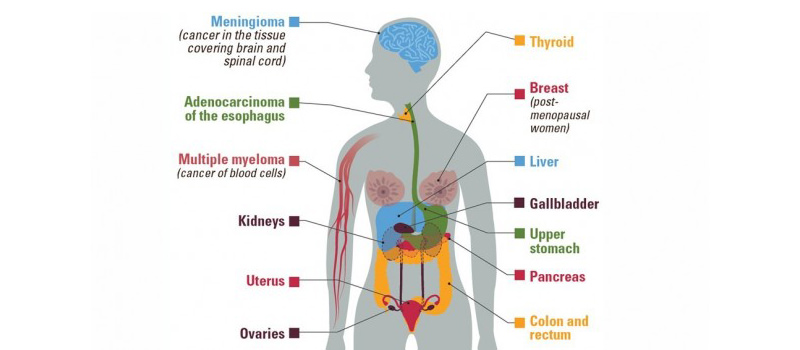The first thing that comes to our mind, when we hear the word cancer is fear, anxiety. A diagnosis of cancer is not always life threatening. Most cancer when identified at an early stage is almost always curable.

Let us know more about it
Cancer is a very small term used for a large group of diseases that are caused when abnormal cells divide rapidly, and spread to the other tissues and organs. It is the disease that results when the cellular changes cause an uncontrolled growth and division of cells. Tumour is a term that is used to define mass of tissue that can have the capacity to invasion termed as malignant/cancerous tumour and when the mass does not have the capacity to invade it is termed as benign.
Cancer is the name given to a collection of related diseases.
Some types of cancer cause rapid cell growth, while others cause cells to grow and divide at a slower rate.
Many cancers form solid tumors, which are nothing but masses of tissue. As is often heard or known, some forms of cancer result in visible growths called tumors, while some cancer such as leukemia does not have any visible tumor.
Cancer is one of the leading causes of death in the world.
Cancer can literally start anywhere in the human body, which is made up of innumerable cells.
Cancerous tumors are malignant, which means that they can spread and invade the nearby tissues. In addition, as these tumors grow, some cancer cells can break off and travel to distant places in the body through the blood or the lymph system and form new tumors far away from its origin.
Some cancer cells can also migrate through the bloodstream or lymphatic system to distant areas of the body. A cancer that has spread from the place where it first started to another place in the body is called metastatic cancer. The process by which cancer cells spread to other parts of the body is called metastasis. The cancers that have metastasized are usually considered more advanced than those that have not metastasized. Metastatic cancers are harder to treat and more fatal.
Metastatic cancer has the same name and the same type of cancer cells as the original or the primary cancer.
Benign tumors do not spread or invade the nearby tissues. Unlike most benign tumors elsewhere in the body, benign brain tumors can be life threatening.
Malignant tumors are cancerous and can invade other parts of the body.
Cancer is caused by changes to the genes that control the way our cells function, especially in terms of how they grow and divide. These genetic changes can be caused by habits like tobacco consumption, alcohol consumption, environmental factors like air pollution or even can be inherited in the family.
The different types of cancer are usually named after the organs or tissues where the cancer originates from. As a result of which there are more than a100 types. Cancers are also named by the type of cell that formed them, such as an epithelial cell or a squamous cell.

Here is a list of cancers:
Let us explore
Carcinoma: One of the most common types of cancers is the carcinomas. They are formed by epithelial cells, which are the cells that cover the inside and the outside surfaces of the body. There are many types of epithelial cells. Carcinomas that begin in different epithelial cell types have different names:
a. The cancer that is formed in the epithelial cells which produce fluids or mucus is called adenocarcinoma. Most of the breast, colon, and prostate cancers are adenocarcinomas.
b. The cancer that begins in the lower or basal (base) layer of the epidermis, i.e., the outer layer of the skin is called basal cell carcinoma.
c. The cancer that is formed in the squamous cells which are the epithelial cells that lie just beneath the outer surface of the skin is called squamous cell carcinoma. Squamous cell carcinoma affects many organs including the stomach, intestines, lungs, bladder, and kidneys. Squamous cell carcinomas are also called as epidermoid carcinomas.
d. The cancer that is formed in a type of epithelial tissue called as transitional epithelium or urothelium is the transitional cell carcinoma. This form of cancer is found in the bladder, ureters, and the kidneys.
Sarcoma: The cancer formed in the soft tissues of the body like muscle, fat, tendons, blood vessels, nerves, lymph vessels, and the fibrous tissues (such as tendons and ligaments) around the joints is known as sarcoma.
a. Osteosarcoma is one of the most common form of cancer of the bone.
b. The other most common types of soft tissue sarcomas are leiomyosarcoma, Kaposi sarcoma, malignant fibrous histiocytoma, liposarcoma, and dermatofibrosarcoma protuberans.
Leukemia: Cancers originating in the blood-forming tissue of the bone marrow are called leukemias. These cancers unlike other forms of cancer do not form solid tumors. In this form of cancer large numbers of abnormal white blood cells build up in the blood and bone marrow.
a. Lymphoma: Lymphoma is a form of cancer that begins in lymphocytes (T cells or B cells). These are disease-fighting white blood cells that are part of the immune system. Abnormal lymphocytes build up in lymph nodes and lymph vessels, as well as in other organs of the body. This form of cancer is further divided into 2 forms.
(i). Hodgkin lymphoma: In this form of disease, there are abnormal lymphocytes that are called Reed-Sternberg cells. These cells usually form from B cells.
(ii). Non-Hodgkin lymphoma: This is a large group of cancers that start in lymphocytes. The cancers can grow quickly or slowly and can form from B cells or T cells.
b. Multiple Myeloma: Multiple myeloma is a form of cancer that originates in the plasma cells, another type of immune cell. The abnormal plasma cells, called myeloma cells, build up in the bone marrow and form tumors in the bones all over the body. This form is also called plasma cell myeloma or Kahler disease.
Melanoma: Melanoma is a form of cancer that begins in the cells that become melanocytes, which are specialized cells that make melanin which is responsible for skin colour. Most often melanomas form on the skin, but some melanomas can also form in other pigmented tissues such as the eye.
Brain and Spinal Cord Tumors: There are many different types of brain and spinal cord tumors. These tumors are named depending on the type of cell in which they formed and also where the tumor first originated in the central nervous system.
Germ Cell Tumors: Germ cell tumors are a type of tumor that begins in the cells that give rise to sperm or eggs. These tumors can occur almost anywhere in the body and can be either benign or malignant.
Neuroendocrine Tumors: Neuroendocrine tumors are formed from cells that release hormones into the blood in response to a signal from the nervous system. Neuroendocrine tumors may be benign or malignant.
Carcinoid Tumors: Carcinoid tumors are also a type of neuroendocrine tumor. They are slow-growing tumors which are mostly found in the gastrointestinal system. Carcinoid tumors may spread to the liver or to the other organs in the body, and they may secrete substances such as serotonin or prostaglandins leading to carcinoid syndrome.
There are many more different forms of cancer which are not as common as the others in the list. Some are slow progressing, some are aggressive.
There was a time when there was no treatment for cancer. Times have changed. With medical field advancing there are many treatment options available to contain and reduce the cancer growth and sometimes even completely treat depending on the type of cancer and how advanced the cancer is. Some of the most common types of treatment are:
Copyright© Designed & Developed by SlamDunk